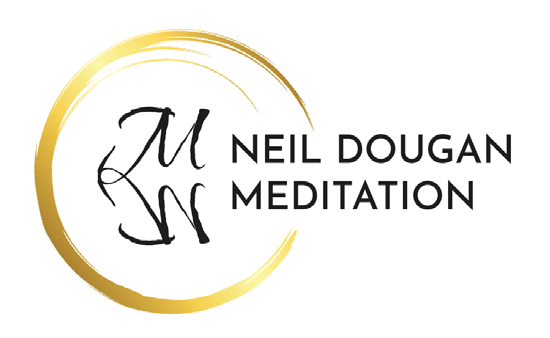A Proven Path to Mental and Physical Well-Being
Meditation is more than just a spiritual practice—it’s a scientifically proven method to enhance mental and physical well-being. From reducing stress to boosting cognitive function, here’s how meditation can transform your life.

Research about the benefits of Meditation
Scientific evidence that meditation has benefits to health and well-being. Until the 1990s the scientific establishment and medical practitioners were in a strong position to dismiss meditation as unsubstantiated, unproven alternative therapy. Derisory terms like ‘posh napping’ or ‘woo woo’ reached mainstream culture if not the annals of Nature magazine. However the 90s became the ‘decade of the brain’, as interest in neuroscience was exponentially increased propelled by advances in technology and in turn research.
Neuroscientist Professor Richard Davidson, (University of Wisconsin’s Laboratory for Functional Brain Imaging), has been able to show that regular meditation does alter the way the brain works. He provided scientific evidence that meditation not only changes the way the brain functions, but also alters the structure of the brain. He concludes that, ‘Attention can be trained in a way that is not that different to how physical exercise changes the body.’ Prior to the 1990s it used to be believed that the structure of the brain was hard wired once we pass adolescence and become adults. However, through using MRI scanners, we now know that different parts of the brain can change with experience. This is called neuroplasticity.
Studies in this area have shown that if we practice a skill repeatedly, we start to see structural changes in the parts of the brain responsible for that skill. The key word here is repeatedly. The brain structure changes are due to a change in grey matter i.e. the strength of connections within the brain. So, if grey matter increases, that part of the brain grows stronger; if it decreases, it weakens. For example, ageing is a process that decreases grey matter. Science has infiltrated popular culture post 90s with the phrase, “s/he doesn’t seem to have much grey matter up there”.
Extensive research has now proved that practicing meditation on a regular basis is an extremely helpful way to make changes to grey matter in different areas of the brain. One example shows (Vestergaard-Poulsen 2009) that extensive {meditation] practice involving sustained attention can lead to changes in brain structure. Using MRI (see below), they observed higher grey matter density in lower brain stem regions of experienced meditators compared with age-matched nonmeditators.
The techniques that can be used to demonstrate physiological changes in the brain.
Research has shown that changes do take place in the brain when people meditate and that those changes can be quantified and illustrated using the tools of neuroscience such as MRI (Magnetic Resonance Imaging) scanners, EEG (electroencephalography), and rCBF (regional Cerebral Blood Flow).
Prior to the 1990s it used to be believed that the structure of the brain was hard wired once we pass adolescence and become adults. However, through the new technology mentioned above, we now know that different parts of the brain can change with experience. A BBC journalist, explored the latest scientific research on neuroplasticity and had her own brain scanned and analysed, and discovered by meditating for only six weeks that some positive rewiring of the brain could be detected (BBC News, 2023)
1.3 Brain waves are altered in a meditative state.
Brainwaves show us the speed at which our brain is working and how quickly electrical activity is happening in the brain. Brainwave activity can be measured using an EEG (electroencephalogram) machine. This exciting research has shown that the pattern of brain wave activity changes when we meditate.
There are five types of brainwave activity. We produce BETA waves In our normal day-to-day activity we are in a state of active attention. We are awake, with our eyes open, we are conscious of what is going on, we are aware of our surroundings and we are usually busy thinking. Mores stress, faster beta waves. Accepted as normal normal but not very creative. The brain emits ALPHA waves when we are in a state of relaxed wakefulness which is the meditation state. The frequency is lower again for THETA waves which we experience as children when creativity flowed naturally. In adults it is present when we dream and also when we are in deep meditation. These are the brain waves most closely associated with creativity and the feeling of ‘bliss’ in meditation practice. DELTA are very low-frequency brain waves and are present when we are asleep. They can also be detected in babies and in adults who have suffered a brain tumour or are in a coma. Finally GAMMA waves are very fast high frequency brain waves and their function is to allow the brain to assimilate information from different areas and so create an overall picture.
Some of the areas of the brain that research has shown change, is where meditation has strengthened areas: the Pre-frontal Cortex which is responsible for logical thinking, planning, cognitive functioning, positive emotion; Tempo-Parietal Junction responsible for empathy and compassion; Hippocampus responsible for memory and emotional regulation and the Hypothalamus responsible for managing body temperature, blood pressure, hunger and thirst. Meditation also weakens the effects of the stress and fear in the Amygdala and reduces the flow of mind chatter in the Default Mode Network is our resting state.
In their research (Travis & Shear, 2010) showed us that different types meditation techniques have different effects on brainwaves for example Focused attention techniques are associated with gamma brainwaves 920-50 hz), while open monitoring techniques such as some mindfulness practices are associated with theta (2-7hz). In meditation we are entering into a state of ‘relaxed awareness’ and this is shown by an increase in alpha wave activity. Interestingly the effects continue afterwards showing that meditation can have an effect on the rest of our lives.
When people enter into deep meditation there is an increase in theta waves as well as alpha waves. This gives rise to the experience of ‘bliss’ you may have heard meditators speak about. The more theta waves detected by the EEG, the more blissful the experience for the meditator.
The physiological changes in the body associated with meditation.
Over recent years there have been a variety of studies which show how practicing meditation has a physiological impact on the body as well as the brain. When we practice meditation, research has shown that we begin to calm down our sympathetic nervous system (stress response) and activate the parasympathetic (rest and relax) which has profound benefits for our body’s functionality.
One of the most famous studies (Benson 1975) into how meditation can help relieve stress was a professor at Harvard’s Medical School. Professor Benson was one of the first scientists to do research on meditation. He is responsible for developing understanding of the ‘relaxation response’, a mechanism of the body that can neutralise the ‘fight-or-flight’ response to stressful situations. First described by Dr Walter B. Cannon at Harvard Medical School in the 1920s, the fight-or-flight response evolved as a survival mechanism. Benson was able to show that many traditional meditation techniques trigger a measurable relaxation response. Thus, he provided scientific evidence for the many health benefits of meditation including reduced stress and high blood pressure.
References
Benson, H. et al (1975) The relaxation response: psychophysiologic aspects and clinical applications, National Library of Medicine.
Davidson, RJ. & Lutz.A (2010) Buddha’s Brain, Neuroplasticity and Meditation, National Library of Medicine
Shear, J & Travis, F. (2010) Focused attention, open monitoring, and automatic self-transcending: Categories to organize meditations from Vedic, Buddhist and Chinese traditions. National Library of Medicine
Vestergaard-Poulsen, P. (2009) Long-term meditation is associated with increased grey matter density in the brain stem, Ovid Technologies (Wolters Kluwer Health)
Hogenboom, M. (2023) How I rewired my brain in six weeks, BBC News,
< https://www.youtube.com/watch?v=pi9Xvh-Dva4&ab_channel=BBCNews (accessed Oct 22, 2023)>
Bibliography
Davidson, R. (2005) Meditation and Neuroplasticity: Training Your Brain. EXPLORE 1, no 5
Herbert, R & Lehmann, D. (1977) Brain wave changes: Theta bursts. Electroenceplaography and clinical neuropsychology Vol 42,3.
With thanks to the British School of Meditation



